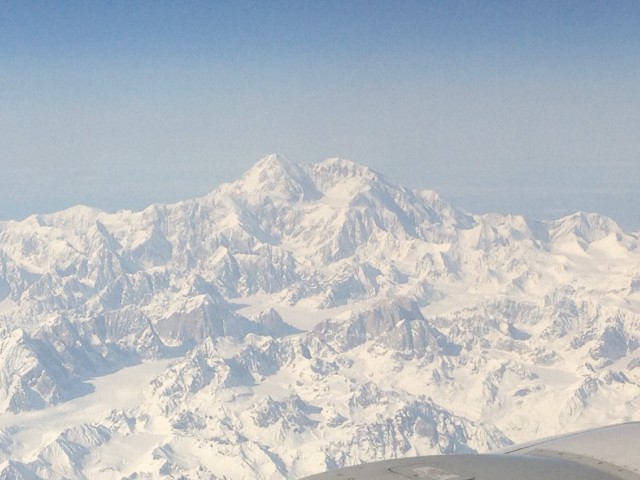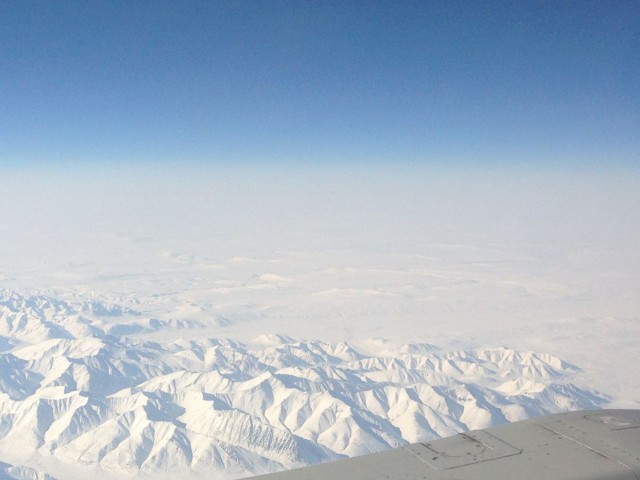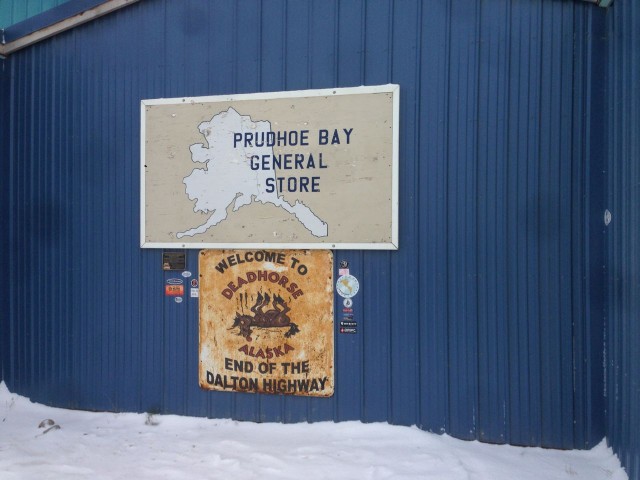I’m convinced that the folks who say “everything’s bigger in Texas” have never been to Alaska. It’s hard to imagine a place that feels or is larger than the wide reaching spaces of “The Last Frontier”. The flight from Anchorage to Deadhorse is always a terrific reminder of this, as everything you pass over is seemingly larger than life. Denali – huge; the Yukon River – wide-reaching; the mountain wilderness — vast; the tundra of the North Slope – expansive. Even the animals (moose, polar and grizzly bears, whales, eagles and the mosquitoes) are large. But in all of that bigness lies a lot of beauty which the photos shared here, taken with my phone, simply don’t do justice. One day I’ll have to come back and explore the areas overflown during these trips in more depth.
After completing the hour and forty minute flight up to Deadhorse, Jack, Scott Richardson (from Penn State) and I picked up a rental truck and started the drive through the Prudhoe Bay oilfields to Oliktok Point. The drive from Deadhorse is about two hours under good conditions, and can be much, much longer. Not only can weather play a factor, but additionally the roads are subject to closure when the oil companies are moving heavy equipment. Today we witnessed the movement of several boats and a very large crane – fortunately, this only resulted in a slight delay.

The very large crane that came barreling down the road towards us. Amazing that this thing can fit onto a truck like this!
The DOE, through Sandia National Laboratory, has arranged for us to be housed at the US Air Force radar station here at Oliktok Point. The facilities can best be described as functional – the USAF personnel on site are friendly and welcoming, and we have everything we could need for successful completion of a field campaign (including functional internet!). There is even a collection of exercise equipment to help us combat the all-hours availability of all sorts of snacks. This indoor equipment is crucial as the potential for wildlife encounters outdoors is great enough for such activities to be strongly discouraged. Upon arrival, we were required to watch a video on interaction with polar bears – the take home message that I got was that while not all human encounters with polar bears will end badly, the best situation is to avoid the encounters all together!
Tomorrow, we begin unpacking and setting up equipment, ensuring that all equipment is ready to go, and (weather permitting) performing some test flights. The weather is a big wild card in this campaign – the forecast calls for overcast conditions, with periods of snow, temperatures in the 20s, and increasing winds towards the weekend. None of this is ideal for flying the DataHawks we have with us, but we’ll get in the air when we can. Finally, for those of you who like to keep an eye on the state of the sea ice, on our drive to the USAF facility we noticed that the near-shore sea ice is beginning to form — soon, the entire sea surface will revert to a snow-covered icy state.




